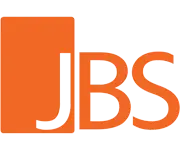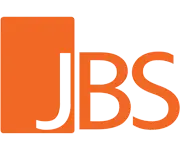Data loss/leakage prevention (DLP) solutions are there to make sure that critical data is not accessed by or tampered with by unauthorized users. The underlying technology that can cause make or break in data loss prevention, is data classification.
Business Needs
Data classification is all about organizing data into categories that would make it easy to retrieve, sort, and store for future use.
It’s interesting that many businesses have sensitive data, but they don’t know about it. Implementing data classification and data security policies can help organizations identify the level of security and privacy protection that needs to be applied to enforce the right access controls.
This exercise can be of particular importance for risk management, legal discovery, and compliance. Corporate policies, procedures, and guidelines for data classification should define what categories and criteria the organization will use to classify its data and also specify the roles and responsibilities of employees within the organization regarding data stewardship for both structured and non-structured data.
Once a data-classification scheme has been created, security standards that specify appropriate handling practices for each category and storage standards that define the data’s lifecycle requirements need to be addressed. Furthermore, in the context of data security, data classification is a useful tactic that facilitates proper security responses based on the type of data being retrieved, transmitted, or copied.
This activity also helps to boost user productivity, reduce operational costs and facilitate prompt decision-making for relevant stakeholders by eliminating unnecessary data.
Pakistan Government and Data Classification Guidelines
The Ministry of IT and Telecommunication shared a Cloud-First Policy early 2022. This policy also contains guidelines for Data Classification as well.
This policy lists the following five simple classes of data. Data classification standards are governed by appropriate data classification guidelines of the Government of Pakistan.
- Open Data
- Public Data
- Restricted Data
- Sensitive/Confidential Data
- Secret
Note: For details about these categories, check the policy here
Data Classification – Automated Process Versus Manual Version
This process involves a lot of watermarks, tags, and labels that define the type of data, its confidentiality, and its integrity along with its Availability. Data’s level of sensitivity is often classified based on varying levels of importance as well as confidentiality, which then correlates to the security measures to be put in place to protect each classification level.
From the industry standard perspective, there are three main types of data classification:
Content-based: Inspects and interprets files looking for sensitive information. It’s an Automated process.
Context-based: Looks at application, location, or creator among other variables as indirect indicators of sensitive information. It’s an automated process as well.
User-based: It’s a manual process where the end-user selects and marks each document i.e., it relies on user knowledge and discretion at creation, edit, review, or dissemination to flag sensitive documents.
As part of Life Cycle management, it is important for an organization to continuously update the classification system by reassigning the values, ranges, and outputs to more effectively meet the organization’s classification goals.
Meeting Regulatory Compliance
By Law, some businesses are required to protect specific types of data, such as the personal data of European Union residents or credit card information.
Data classification exercise allows Customers to identify data subject to specific regulations, so they can apply the required controls and pass audits.
Here are some examples of data privacy regulations where data classification can help with compliance:
EU General Data Protection Regulation: You can uphold the rights of data subjects, including retrieving required documents about specific individuals, to satisfy data subject access requests.
HIPAA: Storing all your sensitive health records systematically will help you implement security controls for proper data protection.
PCI DSS: You can identify, and secure consumer financial information used during credit card transactions.
ISO 27001: Classifying information based on sensitivity and value helps to meet requirements for preventing unauthorized information disclosure or modification, which is the objective of this ISO standard.
In a nutshell, data classification is an important part of managing your business data and must be handled on priority to ensure that your data remains safe at all times.
Want to know how we can help you with data classification? Contact us today.

